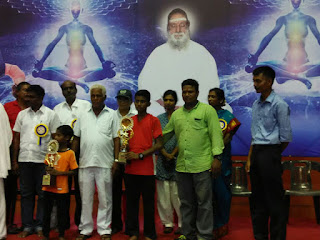உயிர் எழுத்துக்கள் - 12
அ ஆ இ ஈ உ ஊ எ ஏ ஐ ஒ ஓ ஔ
மெய் எழுத்துக்கள் - 18
க் ங் ச் ஞ்
ட் ண் த் ந்
ப் ம் ய் ர்
ல் வ் ழ் ள்
ற் ன்
அ வரிசை
இ வரிசை
ஈ வரிசை
உ வரிசை
ஊ வரிசை
********************************************
அ ஆ இ ஈ உ ஊ எ ஏ ஐ ஒ ஓ ஔ
மெய் எழுத்துக்கள் - 18
க் ங் ச் ஞ்
ட் ண் த் ந்
ப் ம் ய் ர்
ல் வ் ழ் ள்
ற் ன்
அ வரிசை
- க் +அ = க
- ங் +அ =ங
- ச் +அ =ச
- ஞ்+அ =ஞ
- ட் +அ =ட
- ண் +அ =ண
- த் +அ = த
- ந் +அ =ந
- ப் +அ =ப
- ம் +அ =ம
- ய் +அ =ய
- ர் +அ =ர
- ல் +அ =ல
- வ் +அ =வ
- ழ் +அ =ழ
- ள் +அ =ள
- ற் +அ = ற
- ன்+அ =ன
ஆ வரிசை
- க் +ஆ = கா
- ங் +ஆ =ஙா
- ச் +ஆ =சா
- ஞ்+ஆ =ஞா
- ட் +ஆ =டா
- ண் +ஆ =ணா
- த் +ஆ = தா
- ந் +ஆ=நா
- ப் +ஆ =பா
- ம் +ஆ =மா
- ய் +ஆ =யா
- ர் +ஆ =ரா
- ல் +ஆ =லா
- வ் +ஆ =வா
- ழ் +ஆ =ழா
- ள் +ஆ =ளா
- ற் +ஆ = றா
- ன்+ஆ =னா
இ வரிசை
- க் + இ = கி
- ங் + இ =ஙி
- ச் + இ =சி
- ஞ்+ இ =ஞி
- ட் + இ =டி
- ண் + இ =ணி
- த் + இ = தி
- ந் + இ =நி
- ப் + இ =பி
- ம் + இ =மி
- ய் + இ =யி
- ர் + இ =ரி
- ல் + இ =லி
- வ் + இ =வி
- ழ் + இ =ழி
- ள் + இ =ளி
- ற் + இ = றி
- ன்+ இ =னி
ஈ வரிசை
- க் +ஈ = கீ
- ங் +ஈ =ஙீ
- ச் +ஈ =சீ
- ஞ்+ஈ =ஞீ
- ட் +ஈ =டீ
- ண் +ஈ =ணீ
- த் +ஈ = தீ
- ந் +ஈ =நீ
- ப் +ஈ =பீ
- ம் +ஈ =மீ
- ய் +ஈ =யீ
- ர் +ஈ =ரீ
- ல் +ஈ =லீ
- வ் +ஈ =வீ
- ழ் +ஈ=ழீ
- ள் +ஈ =ளீ
- ற் +ஈ = றீ
- ன்+ஈ =னீ
உ வரிசை
- க் +உ = கு
- ங் +உ =ஙு
- ச் +உ =சு
- ஞ்+உ =ஞு
- ட் +உ =டு
- ண் +உ =ணு
- த் +உ = து
- ந் +உ =நு
- ப் +உ =பு
- ம் +உ =மு
- ய் +உ =யு
- ர் +உ =ரு
- ல் +உ =லு
- வ் +உ =வு
- ழ் +உ =ழு
- ள் +உ=ளு
- ற் +உ = று
- ன்+உ =னு
ஊ வரிசை
- க் +ஊ = கூ
- ங் +ஊ =ஙூ
- ச் +ஊ =சூ
- ஞ்+ஊ =ஞூ
- ட் +ஊ =டூ
- ண் +ஊ =ணூ
- த் +ஊ = தூ
- ந் +ஊ =நூ
- ப் +ஊ =பூ
- ம் +ஊ =மூ
- ய் +ஊ=யூ
- ர் +ஊ =ரூ
- ல் +ஊ =லூ
- வ் +ஊ =வூ
- ழ் +ஊ =ழூ
- ள் +ஊ =ளூ
- ற் +ஊ = றூ
- ன்+ஊ =னூ
********************************************

































